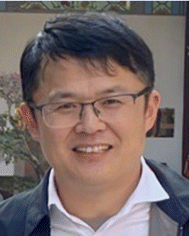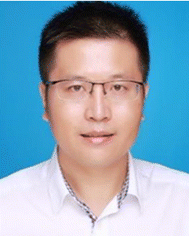Introduction to ‘Nanomaterials for a sustainable future: from materials to devices and systems’
Guohua
Jia
*a,
Hongxia
Wang
*bc,
Xuyong
Yang
*d,
Lina
Quan
*ef and
Yun
Liu
*g
aSchool of Molecular and Life Sciences, Curtin University, Bentley, WA 6102, Australia. E-mail: guohua.jia@curtin.edu.au
bSchool of Chemistry and Physics, Faculty of Science, Queensland University of Technology (QUT), Brisbane, QLD 4000, Australia. E-mail: hx.wang@qut.edu.au
cAustralia Centre of Materials Science, Queensland University of Technology (QUT), Brisbane, QLD 4000, Australia
dKey Laboratory of Advanced Display and System Applications of Ministry of Education, Shanghai University, Shanghai 200072, China. E-mail: yangxy@shu.edu.cn
eDepartment of Chemistry, Virginia Tech, Blacksburg, Virginia 24061, USA. E-mail: linaquan@vt.edu
fDepartment of Chemistry, University of North Carolina Chapel Hill, Chapel Hill, North Carolina 27599, USA
gResearch School of Chemistry, The Australian National University, Canberra, ACT 2601, Australia. E-mail: yun.liu@anu.edu.au
As modern society's demand for energy continues to grow, the development of nanomaterials with tailored properties for use in energy conversion and storage systems, reducing energy consumption while generating and storing energy, is becoming increasingly important. With advancement in synthesis methods and theoretical simulations of nanomaterials, attention has been turned to the study of how to rationally design, synthesize, and integrate nanomaterials into energy devices, and ultimately, how to increase performance of devices such as solar cells, batteries, fuel cells, supercapacitors, light-emitting diodes and photodetectors and their integrated systems, to tackle real global challenges. This new themed collection in Journal of Materials Chemistry A, Journal of Materials Chemistry C and Nanoscale, captures the cutting-edge innovations in nanomaterials synthesis, simulation, device fabrication, and system integration, that are driving this field forward. The scope of this collection loosely aligns with the 1st Australian Materials Chemistry Conference (AMCC23), held in Fremantle, Western Australia in November 2023. This conference witnessed the participation of about 200 scientists at all levels from various countries, and was one of the most influential conferences in the area of materials chemistry in Australia. Supported by the Royal Society of Chemistry, the programs of this conference covered a wide area under the umbrella of ‘materials chemistry’.
The research topics covered included: multifunctional materials for electronics, optics and biomedicine, quantum materials for optoelectronics, energy materials for catalysis, CO2 reduction, batteries, hydrogen and solar energy conversion, density functional theory simulation and molecular dynamic simulation and modelling in mechanistic studies of nanomaterials, and machine learning in the rational design and materials screening, and advanced characterization methods for materials. This collection brings together the latest research from the attendees of the conference and other researchers across the world who are working in the aforementioned areas. Research articles and reviews of the collection are broadly classified into nanomaterials for many stimulating applications in energy production and storage, rechargeable batteries, sensing, light-emitting diodes, pollutant removal and degradation, CO2 reduction, and bioimaging, especially in optoelectronic devices such as light-emitting diodes and solar cells.
A large portion of this collection is focusing on recharging batteries using nanocomposites. Cai et al. doped vanadium (https://doi.org/10.1039/D4TA08073D) and nickel ions (https://doi.org/10.1039/D4TA03739A) into metal oxides which acted as an anode to boost the performance of lithium-ion batteries; whereas Sun et al. incorporated FeSiF6 to promote the stability of the anode materials (https://doi.org/10.1039/D4TA02532F). Other metal-ion batteries including sodium and zinc ions were reported by Wu et al. (https://doi.org/10.1039/D4TA06069E) and Chen et al. (https://doi.org/10.1039/D4TA04112G) who employed Na4MnV(PO4)3 and ammonium vanadate nanoflowers, respectively, to improve the capacities of these rechargeable metal-ion batteries. Pradhan et al. demonstrated nanocomposites containing Pt nanoparticles, ZnO and carbon quantum dots are promising trifunctional electrocatalysts for both methanol fuel cells and zinc–air batteries (https://doi.org/10.1039/D4TA05630B).
This collection also showcases a handful of research that uses nanoparticles for hydrogen production and storage. Li et al. optimized the reaction kinetics of hydrogen production in the full pH range using Pt-decorated Ni3S2/MoS2 nanorod arrays; while Ruiz-Santacruz et al. used Mg2Ni composites with carbon nanofibers for hydrogen storage, which provide insights into the effect of nanosizing on hydriding reactions (https://doi.org/10.1039/D4NR01725K).
Another interesting section of this collection is related to pollutant removal and degradation using nanocomposites as the photocatalysts. Feng et al. developed a molten salt-assisted synthesis approach to prepare N-doped biochar for degrading acetaminophen (https://doi.org/10.1039/D4TA07221A), whereas Chen et al. utilized amorphous carbon coated on carbon textiles, as the photocatalysts to degrade dye wastewater (https://doi.org/10.1039/D4TA07813F).
In addition to the aforementioned applications, nanomaterials are also excelling in optoelectronic devices including light-emitting diodes, transistor and solar cells. Yang et al. gave an insightful review on the most recent advances in direct optical lithography of nanomaterials (https://doi.org/10.1039/D4TA06618A). Ma et al. developed a new approach using in situ amino alcohol hybrid ZnMgO nanoparticles to reduce exciton quenching at the quantum dots/electron transfer layer interface and enhance electron injection of blue ZnSeTe quantum dots (https://doi.org/10.1039/D4NR01515K) while Sun et al. used ZnMgO/PEDOT:PSS as the interconnecting layer to fabricate tandem quantum dot light-emitting diodes with an EQE exceeding 35% (https://doi.org/10.1039/D4TC01175A). He et al. passivated the surface of perovskite films using 4-aminophenyl sulfone to increase the stability and external quantum efficiency of perovskite solar cells (https://doi.org/10.1039/D4TA01039F).
This themed collection is dedicated to showcasing some of the latest advancements in all aspects of materials chemistry for nanomaterials. We are delighted to highlight these exciting and timely research advances, and sincerely hope this collection could act as a catalyst to inspire more fascinating and excellent future research.
| This journal is © The Royal Society of Chemistry 2025 |





